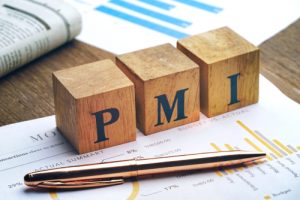The seasonally adjusted Absa Purchasing Managers’ Index (PMI) rose to a solid 57.8 points in May 2021 from 56.2 in April. Four of the five subcomponents remained well above the neutral 50-point mark with only the employment index dipping back into negative terrain. In all, the average level of the PMI recorded in the first two months of Q2 2021 (57 points) is well above Q1’s average (53.8), which suggests that the sector is on track to record another quarterly expansion. A significant annual expansion is effectively guaranteed given the extremely low base set in Q2 2020.
The new sales orders index regained April’s loss and rose to 60.5 index points in May. This was despite respondents noting a dip in export sales, which means that domestic demand likely drove the improvement. Potentially, this reflects increased mining-related activity amid elevated SA export commodity prices.
On the back of higher orders, business activity increased by a robust 8 points to reach 58.8 points in May. So far in Q2, the index has averaged about 4 points above Q1 2021’s reading. This means that the manufacturing sector could record another quarterly expansion in activity.
Inventories also improved, rising more than 6 points to 61.4 points during the month – the highest level since October 2020.
After a surprising surge in April, the employment index dipped back below the neutral 50-point mark in May. Despite the decline, the index remains relatively high compared with its history. However, as cautioned last month, the index would have to remain at an elevated level for a sustained period before one can confidently say that job creation in the manufacturing sector is on the mend.
The purchasing price index nudged down further in May 2021, albeit that 87.1 points is still an elevated level for this series (for example, last year’s average reading was 73 points). While the stronger rand exchange rate helps to alleviate some cost pressure, prices of some raw materials and intermediate goods have risen sharply during recent months. Higher electricity and fuel prices, with another diesel price hike in June, have added to the upward pressure on costs.
Indeed, the recent high readings of the PMI’s price index correspond to the official producer price index (PPI) data published by Stats SA. The annual PPI for final manufactured goods accelerated to 6.7% in April, up from 5.2% in March, while the PPI for intermediate manufactured goods rose by 11.4% y-o-y.
While current business conditions improved in May, purchasing managers turned slightly less optimistic about the trading environment going forward. The index tracking expected business conditions in six months’ time dipped to 63.5 in May, down from 67.9 in April. This could be a result of concerns over a COVID-19 third wave. A renewed virus-induced change in spending behaviour by consumers and firms could still hinder domestic demand. The ever-present possibility of disruptive load-shedding likely also remains top of mind for many producers.
The supplier deliveries index fell to the lowest level in more than a year. Positively, this could mean that supply chains are slowly starting to unclog, products are more readily available and deliveries of supplies are thus faster. This is because this index is inverted: longer delivery times actually lift the index and a better delivery performance results in a lower index value. However, despite the recent downward move, the index remains high from a long-term historic perspective.


























